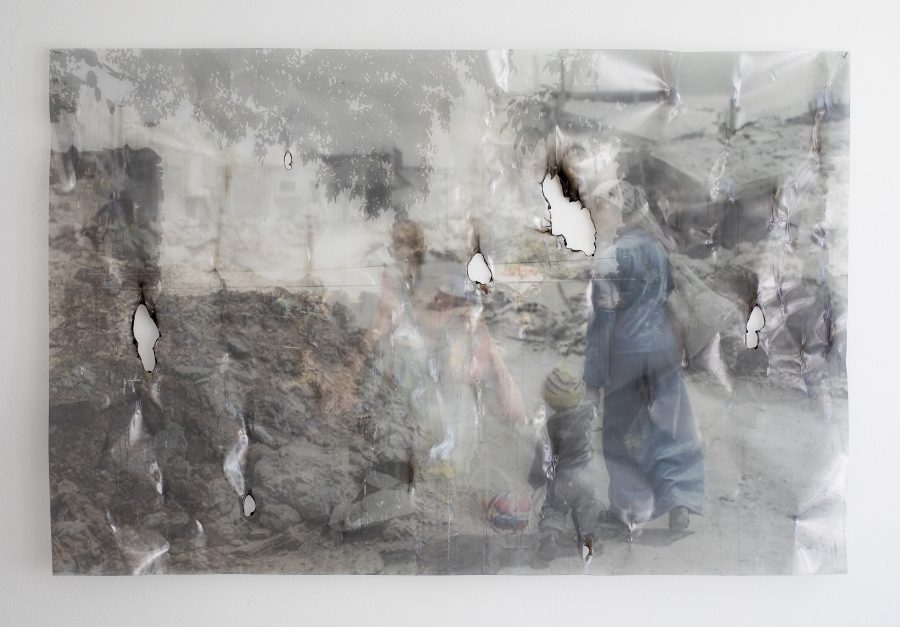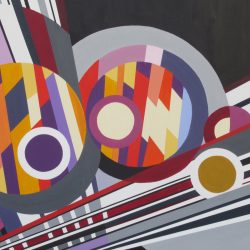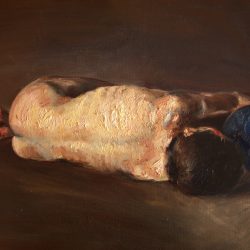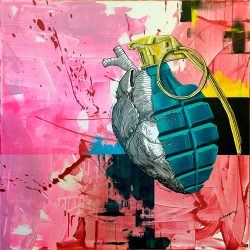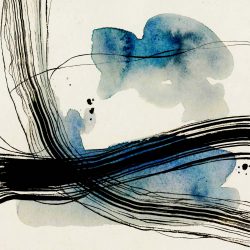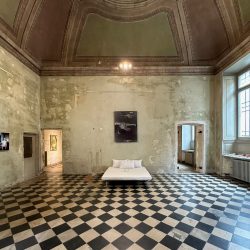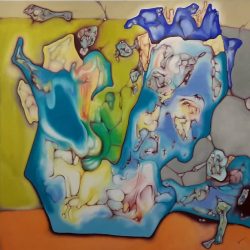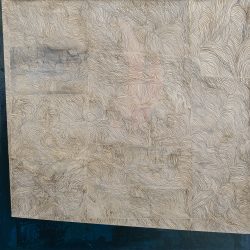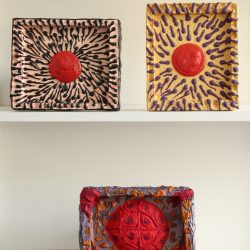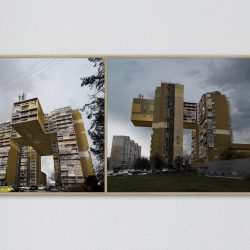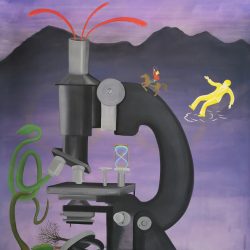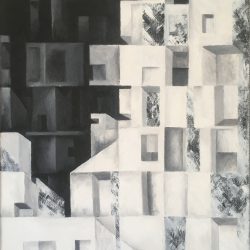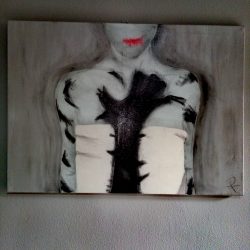work
Ipotesi Di Ri(de)costruzione – Senza Titolo
| category | Installation |
| subject | Political / Social, Abstract |
| tags | #painting #installation #conceptualart |
| base | 137 cm |
| height | 90 cm |
| depth | 0 cm |
| year | 2022 |
The intervention constitutes a landing point, as well as a starting point at the same time, consequent to the exhaustion and progressive re-configuration of the cycle of Papers, or Pages Of Ash. This previous series of works is presented as an attempt to lead to reconciliation (turning to recovery) a fragment of individual and private memory with respect to a shared inheritance, an extension of an increasingly torn collective identity.
The whole process aimed at conservation indicated above remains constant thanks to the persistence of a division between public and private, in the form of a gash through which it is possible to see the two dimensions coexist.
When the gap that opens between past and present - between me and us - is investigated and crossed by that practice of excavation that the artistic intervention tries to implement in this case, this superstructure fails, bringing the two floors to get confused.
On the plastic film, which refers to the concepts of mirror and photographic negative (as a surface hosting the overturning of an image, starting from which it can nevertheless be reproduced at any time), residues of heterogeneous origin are deposited: for a family past, increasingly tending to disappear, photo reportage clippings are superimposed documenting marginal situations, but binding on a social level.
In this first fragment the series is composed of a photograph in which the artist at one year of age is sitting on his father's shoulders during an excursion tends to scatter, gradually leaving room for the emergence of a shot from 2013 in which a Syrian child of the same age he crosses, shaking his mother's hand and kicking a ball, through his village destroyed by bombing.
Individual memory is rehabilitated only as a trace able to denote the relevance of an imaginary even closer to repression, but which precisely in its deconstructed character presents an opportunity for concrete redefinition and in dialogue with today (in the child's feet that touch the ground, advancing in spite of everything, or in the gaze of the mother turned beyond, to what is other than itself).
What was previously considered fragmented translates into a matrix that is placed on a level of invisibility, starting from which to direct attention to contexts to which there would really be a need to look, abandoning indifference, as a hypothesis for a reconstruction starting from rubble.
The whole process aimed at conservation indicated above remains constant thanks to the persistence of a division between public and private, in the form of a gash through which it is possible to see the two dimensions coexist.
When the gap that opens between past and present - between me and us - is investigated and crossed by that practice of excavation that the artistic intervention tries to implement in this case, this superstructure fails, bringing the two floors to get confused.
On the plastic film, which refers to the concepts of mirror and photographic negative (as a surface hosting the overturning of an image, starting from which it can nevertheless be reproduced at any time), residues of heterogeneous origin are deposited: for a family past, increasingly tending to disappear, photo reportage clippings are superimposed documenting marginal situations, but binding on a social level.
In this first fragment the series is composed of a photograph in which the artist at one year of age is sitting on his father's shoulders during an excursion tends to scatter, gradually leaving room for the emergence of a shot from 2013 in which a Syrian child of the same age he crosses, shaking his mother's hand and kicking a ball, through his village destroyed by bombing.
Individual memory is rehabilitated only as a trace able to denote the relevance of an imaginary even closer to repression, but which precisely in its deconstructed character presents an opportunity for concrete redefinition and in dialogue with today (in the child's feet that touch the ground, advancing in spite of everything, or in the gaze of the mother turned beyond, to what is other than itself).
What was previously considered fragmented translates into a matrix that is placed on a level of invisibility, starting from which to direct attention to contexts to which there would really be a need to look, abandoning indifference, as a hypothesis for a reconstruction starting from rubble.



